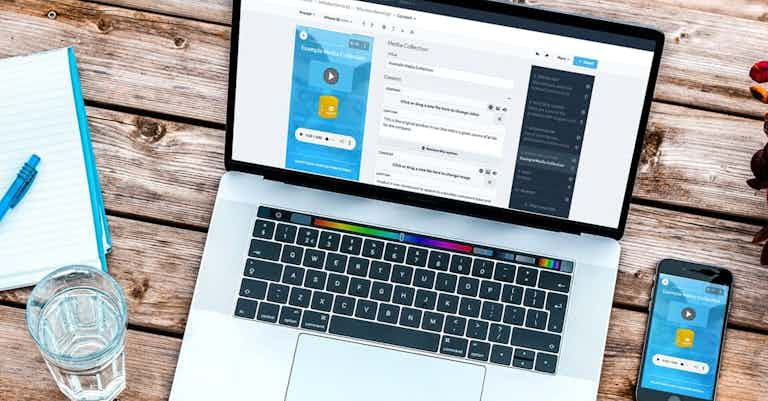TPACK

Technological Pedagogical and Content Knowledge (TPACK)
The TPACK framework is an effective approach to the implementation of educational technology or eLearning practices. It was developed by Mishra and Koehler to guide the integration of technology into education settings, and focuses on the concepts of Technological Knowledge (TK), Pedagogical Knowledge (PK) and Content Knowledge (CK). TPACK outlines how content (what is taught) and pedagogy (how the educator communicates the content) should form the foundation for successful eLearning. This framework is extremely useful for instructional designers who are interested in using technology to develop captivating and versatile lessons.
TPACK Framework for Instructional Designers
The technological tools employed by educators must convey the content and support the pedagogy to enhance the learning experience. Digital tools may be either a suitable replacement for analog tools, or used as a method for delivering content which may not be possible in traditional learning contexts (source SAMR Model, Dr Ruben Puentedura). Educators should be aware that each approach is valid, and the strongest execution is dependent on the education context and learner profile. Within the TPACK model is recognition that its execution will differ depending on different learning circumstances.
TPACK Model
The model positions effective e-learning as intrinsically linked to one’s understanding of three broad categories:
Content Knowledge (CK)- Educator’s knowledge about the subject matter to be learned
Pedagogical Knowledge (PK)– Educator’s knowledge about practices of teaching and learning.
Technological Knowledge (TK) – Matt Koehler describes TK as an educator’s knowledge of ways of working with technology.
TPACK – Technological Knowledge
TPACK relies not only upon knowledge of the three key concepts, but how each can interact to develop meaningful interactions between learners and technology. Crucial to the success of TPACK is the utilisation of the adjacent secondary sections of the framework, which are listed below. These position eLearning as a strongly integrated and unique platform for education, rather than education with an added technology element.
Below are some useful questions and considerations for Instructional Designers implementing and employing eLearning.
Questions To Consider When Implementing TPACK
Pedagogical Content Knowledge (PCK) – ability to tailor the content and instructional materials to learners.
- What is the learners prior knowledge of the content? (eg. Are there experts within your group of learners who may be able to assist novices, and therefore should you integrate elements of peer and social learning into the lessons?)
- How does the content need to be adapted to the learners? (eg. How can you best engage the learners prior knowledge, increase their motivation and account for different levels of understanding?)
Technological Content Knowledge (TCK) – understanding of how content and technology can influence and change one another.
- How does the content need to be adapted to be most suitable to the capabilities of the e-learning platform?
- Does the platform allow for differentiation of content? (eg. Can learners interact with the platform or undertake the lessons in differing ways?)
- What features (or restraints) does the e-learning platform possess which need to be considered?
- Does the platform allow for instant updates to information such as adjustments to content?
- How accessible is the platform? Does the platform allow users to return to a lesson once they have completed it? (eg. Do you want learners to be able to redo lessons or return to them for reference?)
Technological Pedagogical Knowledge (TPK) – understanding of how teaching practices and learning methods can change through the impact of technology.
- What are the learner’s previous experiences with the technology? (eg. What guidance do you need to provide to the learner about how to best utilise the platform? Do you need to provide additional instructions to assist learners with their interaction with the technology?)
- What changes need to be made to pedagogical practices to adapt to the use of technology? (eg. Do you need to break down the content into dot points to account for limited space on slides? Should you make your e-learning content responsive to different devices? Can you incorporate activities which are not possible in traditional learning methods, such as photography, film, or online resources or feedback? Do you need to consider how to incorporate critical thinking skills in an engaging way?)
- How can you track progress, as well as execute knowledge checks and testing through the platform? It is important to remember that even with technology as a tool, teaching it should not be more significant than the content of the lesson, the focus should always be upon learning the content in the most effective and sustainable way. It is also crucial to consider your context such as how and why your learners are using the platform, to design the best e-learning content.
There are other examples of instructional strategies and frameworks available for instructional designers such as the Addie model.
If you would like to learn more about TPACK with EdApp
If you’d like to know more about how EdApp’s mobile learning platform can help your internal training practices, get in touch at enquiries@edapp.com. You can also try EdApp’s Mobile LMS and authoring tool for free by signing up here.
Curated course examples
Author